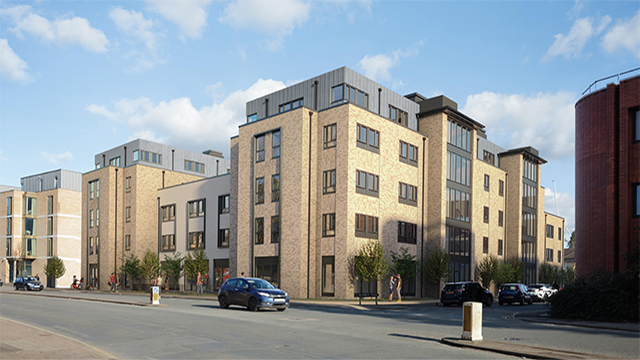The evolving model of innovation
COMMENT The case for cultivating mixed-use, technology-enabled, and collaborative innovation districts has been a compelling one for years. Cities and regions have harnessed their assets to drive societal and economic benefits and contribute to building the knowledge economy, key to the UK’s future growth prospects.
We are seeing a new model for innovation emerging, more targeted to finding solutions to today’s biggest challenges – among them the race to attract top talent, address the UK’s acute skills shortage, drive post-pandemic recovery and inward investment, ensure greater resilience in uncertain markets, support the government’s levelling up agenda and more.
Dynamic urban hubs
How have innovation districts evolved, and what does the concept of innovation mean in the current landscape?
COMMENT The case for cultivating mixed-use, technology-enabled, and collaborative innovation districts has been a compelling one for years. Cities and regions have harnessed their assets to drive societal and economic benefits and contribute to building the knowledge economy, key to the UK’s future growth prospects.
We are seeing a new model for innovation emerging, more targeted to finding solutions to today’s biggest challenges – among them the race to attract top talent, address the UK’s acute skills shortage, drive post-pandemic recovery and inward investment, ensure greater resilience in uncertain markets, support the government’s levelling up agenda and more.
Dynamic urban hubs
How have innovation districts evolved, and what does the concept of innovation mean in the current landscape?
In their influential research published almost 10 years ago, the Rise of Innovation Districts, academics Bruce Katz and Julie Wagner spoke of the emergence of a “new complementary urban model” for economic development – one that also saw the transition away from secluded out-of-town science parks.
This created more dynamic urban hubs to attract cutting-edge businesses and inspire the sharing of cross-sector knowledge and ideas.
London and other major city regions have been undergoing a reinvention to position themselves as globally competitive innovation centres and cement the UK’s reputation as a world-class investment destination and leader in innovation.
Creating innovation districts in an urban context goes beyond bricks and mortar, requiring a thoughtful design approach to curate the best mix of organisations, people, skills, industries, amenities and placemaking. Only then will the environment spark those incidental conversations and meetings that lead to breakthroughs.
The Knowledge Quarter in King’s Cross is a stand-out example, with more than a hundred companies and 70,000 people collaborating within a one-mile radius.
Further, with the rise of life sciences as a crucial industry post-covid, more pioneering start-ups and scale-ups in the space are seeking central locations.
As is the case of the SC1 life science innovation district in central London, where the Arcadis team is delivering the Pears Centre for Children and Young People in the South London and Maudsley NHS Foundation Trust hospital. This will modernise mental health facilities and bring together ground-breaking clinical services and research to provide effective early intervention.
Smart cities
Innovation can extend beyond technology and life sciences to focus on mental health and wellbeing.
With population growth and the trends of urbanisation and densification, the need for innovative and sustainable city solutions will intensify, and this is where fast-advancing technologies can support the evolution of smart cities.
Smart cities and innovation districts have many synergies and can mature in tandem, given the reliance of innovation on robust digital connectivity and infrastructure and the fact that being data-led is a priority for both companies and cities.
Beyond the urban environment and outside of London, there is a regional need for innovation to drive more inclusive growth and improve productivity (as the UK’s R&D expenditure is lower than the OECD average).
Innovation can thrive in non-urban environments but calls for a different approach, with places designed to focus on specific areas of expertise. While life sciences work well in city centres, for instance, due to the proximity to universities and hospitals, research centres lend themselves well to more rural or suburban settings.
A more inclusive innovation model can go a long way to boosting local economies through critical skills development, employment opportunities and acting as a catalyst for regeneration.
Greater Manchester’s Atom Valley is a public-private partnership working on an advanced hi-tech manufacturing hub that will create 20,000 jobs across Rochdale, Bury and Oldham.
The region has certain areas of deprivation, and this project will help kick-start a virtuous cycle where the positive impact will reconnect these suburban towns, flow into surrounding communities and unlock success for the wider Northern Powerhouse.
Innovation-based growth
It is also important to remove silos between individual innovation districts so that they are better connected as a network rather than acting as disparate hubs to accelerate discovery, R&D, and commercialisation.
This is in line with the levelling up white paper, which aims to increase public research and development spending outside the South East by 40% by 2030 and the government’s reaffirmed focus on innovation-based growth, having introduced 12 new investment zones with tax incentives as well as an additional £100m of funding to be allocated across Greater Manchester, Glasgow, and the West Midlands.
Going forward, more areas will look to establish innovation hubs, and it is vital that the right environment is in place to facilitate this, including simplifying the planning process, collaborating with local authorities, and making the right spaces and infrastructure available. The objective is for as many people and regions as possible to participate in – and reap the rewards of – a self-sustaining innovation ecosystem and the new knowledge economy.
Maja Nesdale is principal at Arcadis











